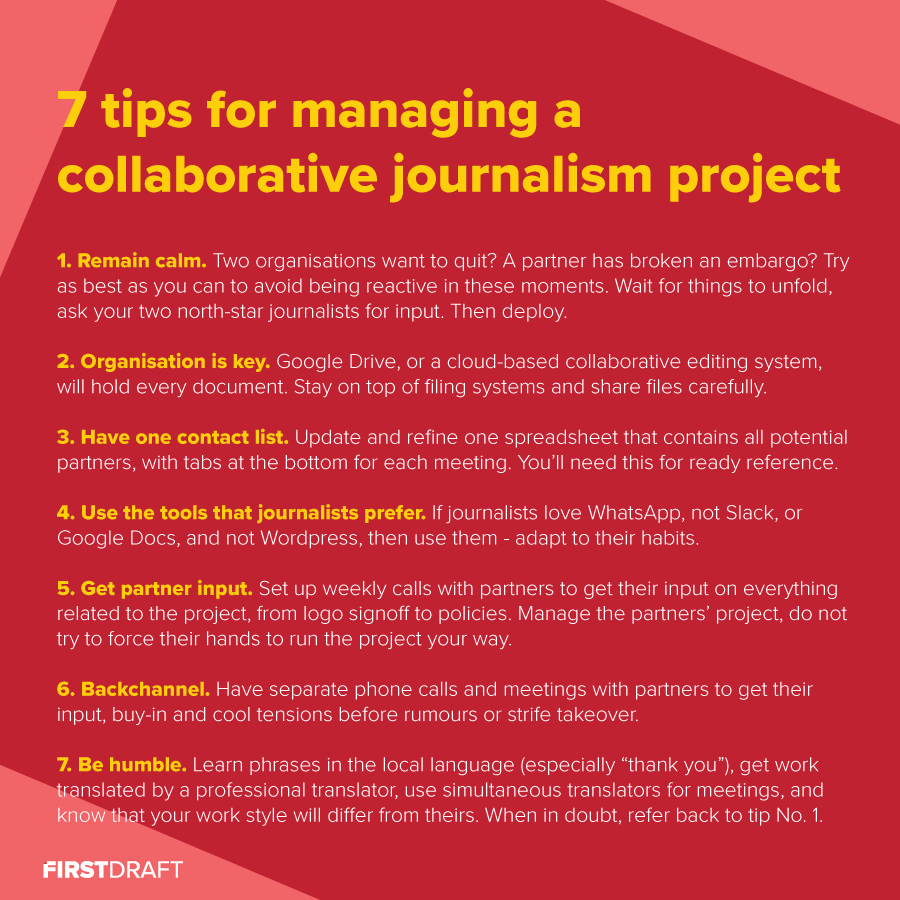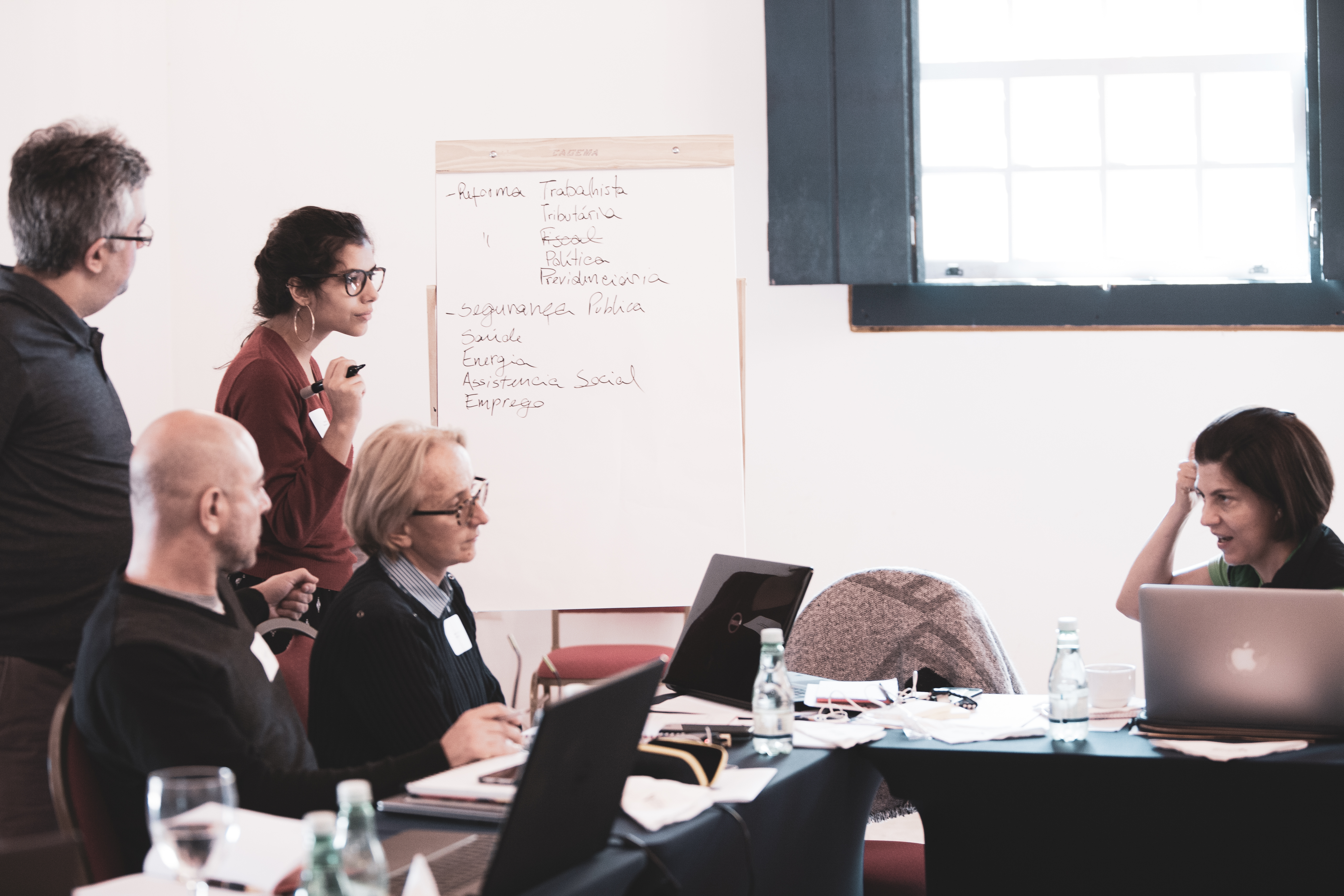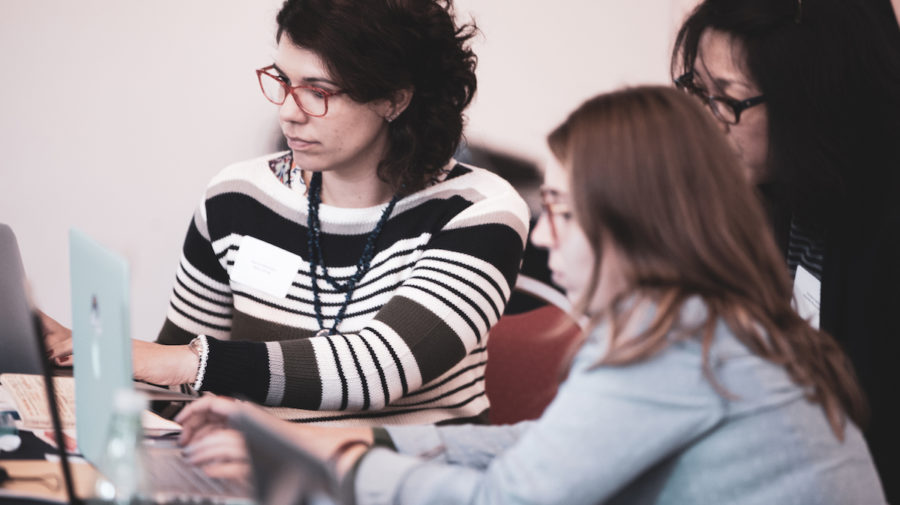Every other day while we were trying to build Comprova, it felt like it might dissolve. There were hesitations, questions and concerns. It’s not easy to find a way for 24 newsrooms to agree to work together, as we did before the 2018 Brazilian elections.
The research evaluating the Comprova project will be released this week. It will be compelling reading for other groups who are considering collaborative projects, and for funders looking to understand whether these projects are worth supporting. But what the research doesn’t reveal is how many fits and starts projects like these have before they take off and soar.
Whenever Comprova started to swerve, Abraji (Brazilian Association of Investigative Journalism) President Daniel Bramatti and Projor (Institute for the Development of Journalism) Director Angela Pimenta kept pointing forward. By the end of the project, 59 journalists and editors had written 146 reports for the Comprova website. These reports were the foundation for the participating newsrooms to publish 1,750 original reports for broadcast, newspapers, magazines and websites based on their work with Comprova.
“They were keen to cooperate with each other, do something relevant to the country and to prove the value of journalism.”
Comprova started publishing on August 6, 2018. Once the reports began, the project used traditional reporting processes, in an untraditional media landscape. These processes included monitoring social platforms and the closed, encrypted messaging app WhatsApp. The project editor, Sérgio Lüdtke, along with two part-time associate editors, started this process in the morning by discovering problematic content that was trending, or had the potential to trend, and sending items on to the team to evaluate.
“I always thought [collaboration] would work,” says Marina Menezes, executive editor at the news site, Nexo Jornal. “I was really sceptical about the involvement of the big national news outlets, but when I saw almost all of them on board, then I was sure it would work. … They were keen to cooperate with each other, do something relevant to the country and to prove the value of journalism.”

Credit: Aimee Rinehart, First Draft
Some partners were unsure that a project of this scale could work, especially given the naturally competitive nature of newsrooms. Pedro Noel, then a fact-checker for Agence France-Presse (AFP) and now a First Draft staff member, says that it took him a few weeks to see that the project was going to be a success.
“Gradually, I realised that there was a common ethical goal, shared among all the journalists, to set the record straight during the elections,” Noel says. “There was a real will to share and help each other, which made things each day more rapid and effective.”
There were many days when the team published six or more reports in one day. That meant: finding problematic content, reporting on it, getting at least two other newsrooms to sign off on the reporting, sending the report to the editor for a final review and polish and then finally, publishing the report.
The editing staff worked in an office at the university Fundação Armando Alvares Penteado. The 24 partners all worked in their own newsrooms, so conversations were typically held on WhatsApp. Comprova journalists shared a whopping 18,154 messages on WhatsApp during the project. They interjected, “hey this report is ready and needs review” with loads of emoji fist bumps, flexing muscles and hearts, which helped lift everyone’s spirits — especially Sérgio, who often started his work day at 7 a.m. and went until 11 in the evening.
First Draft’s election projects strive to have lasting impact for newsrooms beyond voting day. Comprova trained all project journalists how to discover, verify and responsibly report on mis- and disinformation. There are now approximately 12 Comprova journalists who are able to train other journalists in these systems, half of whom are women.

At the May 2018 bootcamp project partners from left: Rodrigo Hornhardt of SBT, Ricardo Fotios of UOL, Camila Zazur of Revista Piuia, Pascale Trouillaud of AFP and far right Angela Pimenta, president of Projor.
Comprovadores, as they call themselves, reported that working with normally competing newsrooms helped them to sharpen their skillset. One said that they had come to rely on other Comprovadores so much that instead of asking a colleague who was sitting next to them, they reached out to a project partner. The newsrooms told us that Comprova improved social newsgathering and verification skills. The project also coincided with the launch of debunking projects internally, like Estadão Verifica.
“Everything we produced for Comprova was something different from what we are used to doing,” says Menezes. “In our editorial model we do not focus on misinformation or fact checking conversations on social media. We would also not monitor social media. The project was definitely something different [for Nexo].”
One surprising element for the project was how quickly Comprova’s social media following grew in 12 weeks: 135,000 followers on Facebook and 18,000 followers on Twitter. The total number of all social engagement related to Comprova content was 2,711,578, which is absolutely bananas for a new brand. This was aided by the ad credits provided by Facebook and Twitter. Targeted advertising made a real difference to the reach of Comprova, particularly to those who don’t usually engage with traditional media. Comprova was also the first project where we hired a part-time social strategist and content creator and these elements really bolstered social engagement.
“Comprova quickly turned into a social media phenomenon among the Brazilian public and we had to return all the expectations of all those who were trusting us.”
In addition, this was the first project where we hired a part-time social strategist and content creator and these elements really bolstered social engagement.
“The biggest challenge for me was to meet public expectations,” Noel says. “Comprova quickly turned into a social media phenomenon among the Brazilian public and we had to return all the expectations of all those who were trusting us.”
In an audience survey, 25% of participants polled had heard of Comprova and almost 80% of those people viewed Comprova as a trustworthy brand. Trust in media is a major issue in Brazil, where there are five groups and individual owners who run the majority of news outlets, large news deserts, and there have been many layoffs. (At the beginning of the project, Grupo Abril, which includes three Comprova project partners, filed for bankruptcy protection and laid off 900 employees.) If you think your country is hurting with corporatisation of media, news deserts and the shrinking of newsroom staff, know that these trends are as worrying in Brazil.
There were two meetings, one three-day bootcamp, and a follow-up advanced training before Comprova launched. During these meetings, project parameters were hammered out: what would happen if a partner scooped the project? What will the name be? Would it be a public-facing project? We talked over coffee, Post-it notes, marker pens, scrap paper and caipirinhas. Each interaction, conversation and debate was a deposit in a trust bank for when Comprovadores would be challenged to fight for the project in their newsroom, and when they worked together on a difficult report. Trust among partners gathered slowly over time from one meeting to the next and has carried them through to a planned reboot of the founding collaboration.
Comprova was designed to give new skills to journalists, build resilience in newsrooms when covering mis- and disinformation, and provide the public with answers about content they might have seen online that was intended to confuse their understanding of a candidate or issue. Comprova created awareness among news consumers and distributors of the need to hit the pause button before sharing or reporting on questionable content.
We want to find a way to build upon the brand that muscled its way into the Brazilian media landscape in 12 short weeks before the 2018 elections. This week, at the Abraji Conference in Sao Paulo there is an exciting Comprova-related announcement, so keep an eye on our social channels.
To stay informed, become a First Draft subscriber and follow us on Facebook and Twitter.






